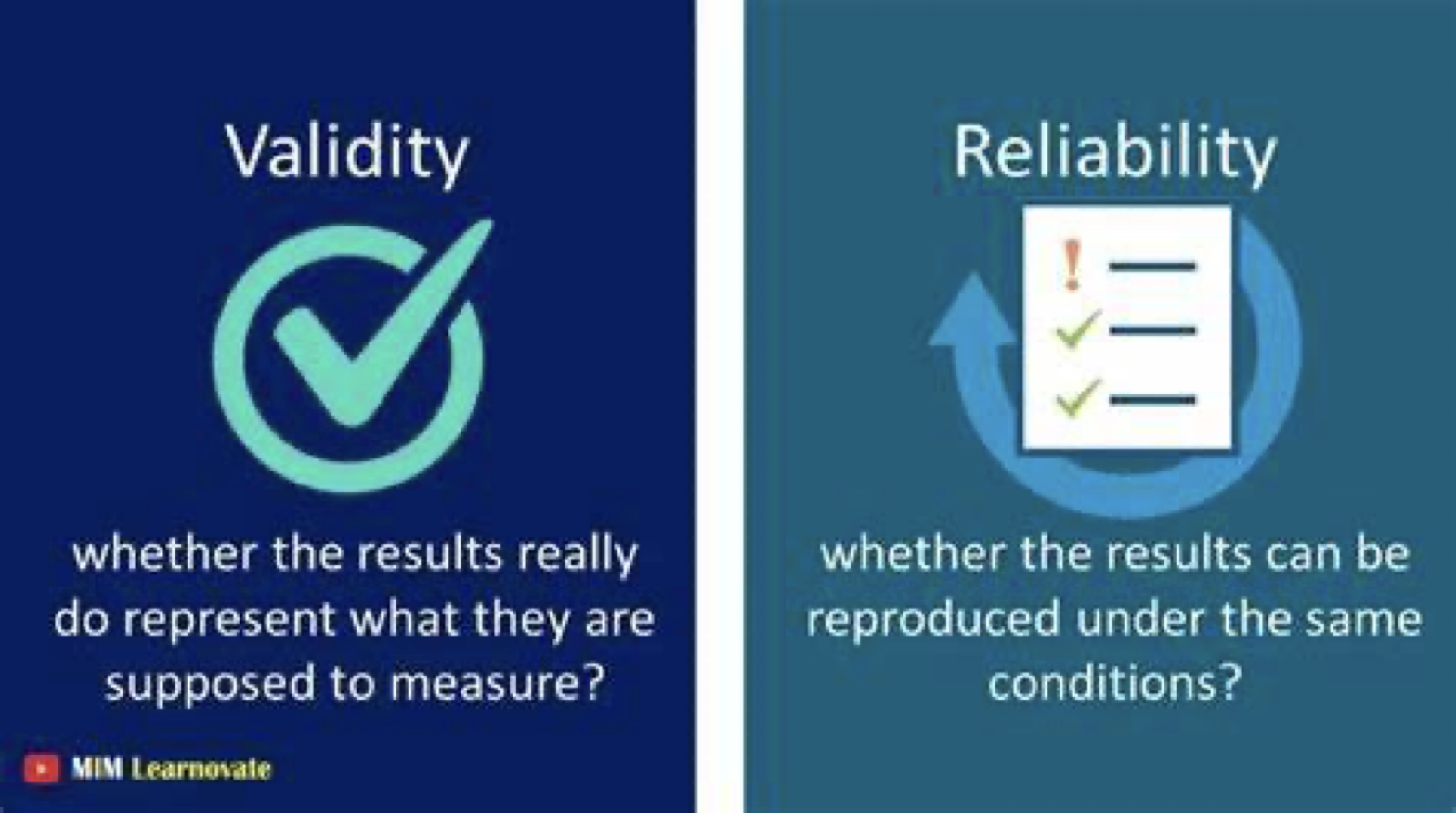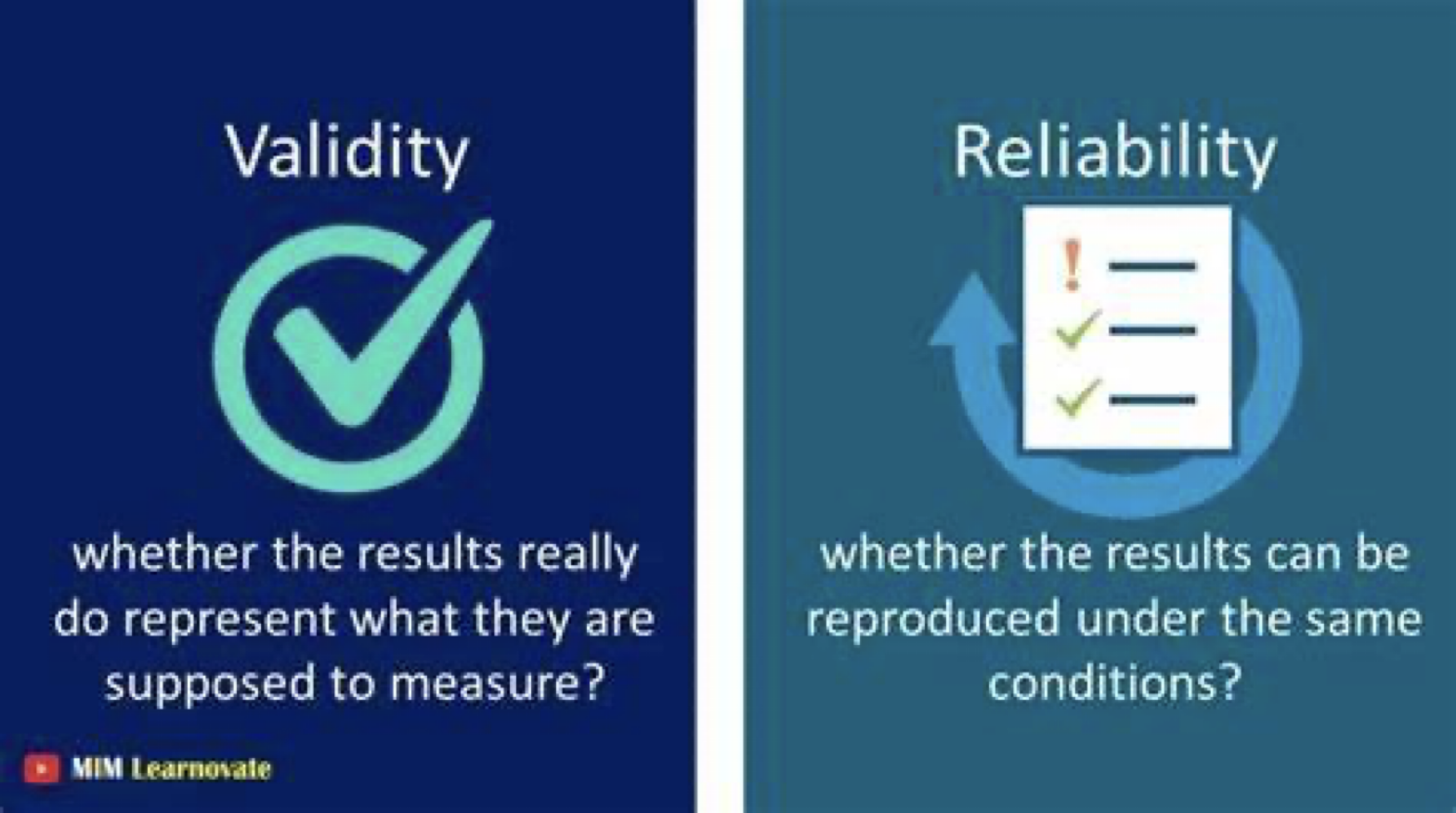Critiquing and Reliability
1/15
Earn XP
Description and Tags
Module 4: Claims and Validities
Name | Mastery | Learn | Test | Matching | Spaced |
|---|
No study sessions yet.
16 Terms
Critique
as a consumer, we assess whether we can trust someones claims (deciding whether we trust is called critiquing)
critiquing research involves understanding how constructs are measured
Operational definitions
defining the variable in terms of precisely how it is to be measures
turn an abstract concept into something measureable
Ways to Measure- Self Report
limitations: an individual’s perception, experience, attitudes, etc.
careful what claims you make
Ways to Measure- Observational
watch/record actual behavior
Ways to Measure- Psysiological
biological data
Measuring Constructs
Challenges
contrasts are not directly measurable
conceptual definition
many ways to make the measurable
operational definition- measure
Must be good measures
How do we know if our operational definition is “good”?
construct validity and construct reliability
To Critique claims
decide what type of claim it is (3 types)
Examine 3 types of reliability
Examine 4 types of VALIDITY
3 types of claims
Frequency claims
Association claims
Casual claims
Bogus claims
Frequency claims
descriptive only; does not explain “why”
ex. “77% of university students report experiencing some kind of psychological distress, either moderate or severe”
Association claims
correlations and relationships only; does not explain “why”
“there is a strong, positive correlation between high stress levels and poor sleep quality”
Causal claims
explain cause and effect; CAN explain “why”
ex. “ good sleep hygiene leads to more efficient learning and higher scores”
**best but hard to achieve**
Bogus claims
not technically a “type” of claim but something to be aware of as a consumer
detecting bogus claims requires critiquing reliability and validity of the research
Reliability
a measure is reliable if it is consistent
a measure yields the same result repeatedly
test- retest reliability
internal consistency
interrater reliability

Validity
a measure is VALID if it is CONSISTENT and CORRECT
it is accurate
face validity
content validity
criterion validity
discriminant validity

Types of Reliability
test-retest reliability
internal consistency
interrater reliability